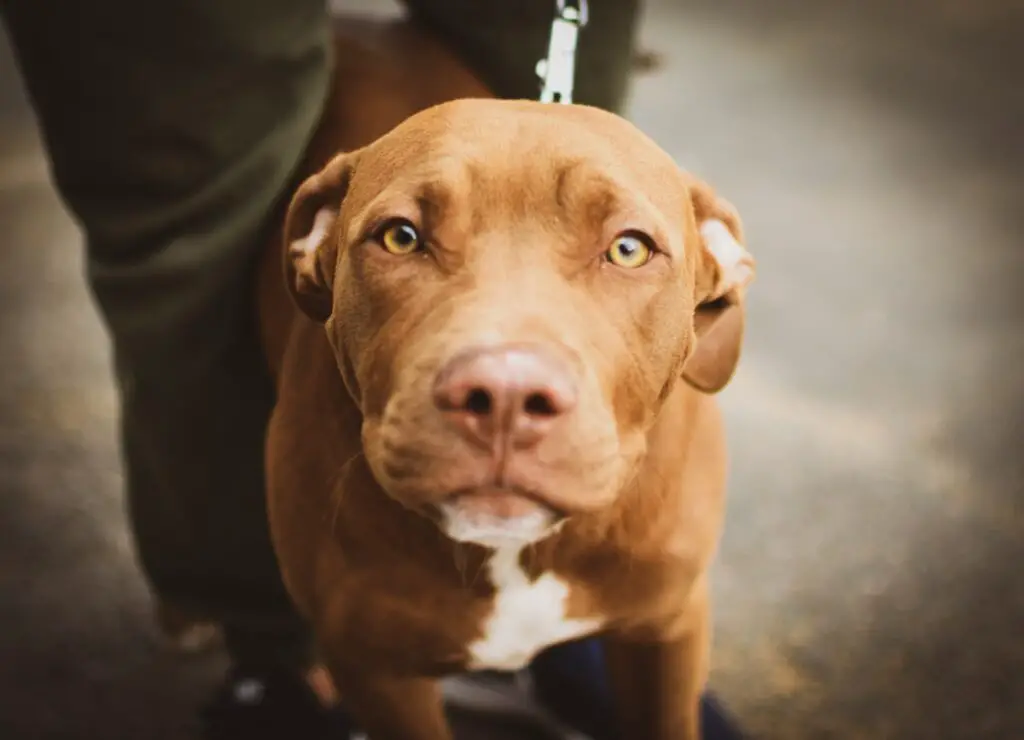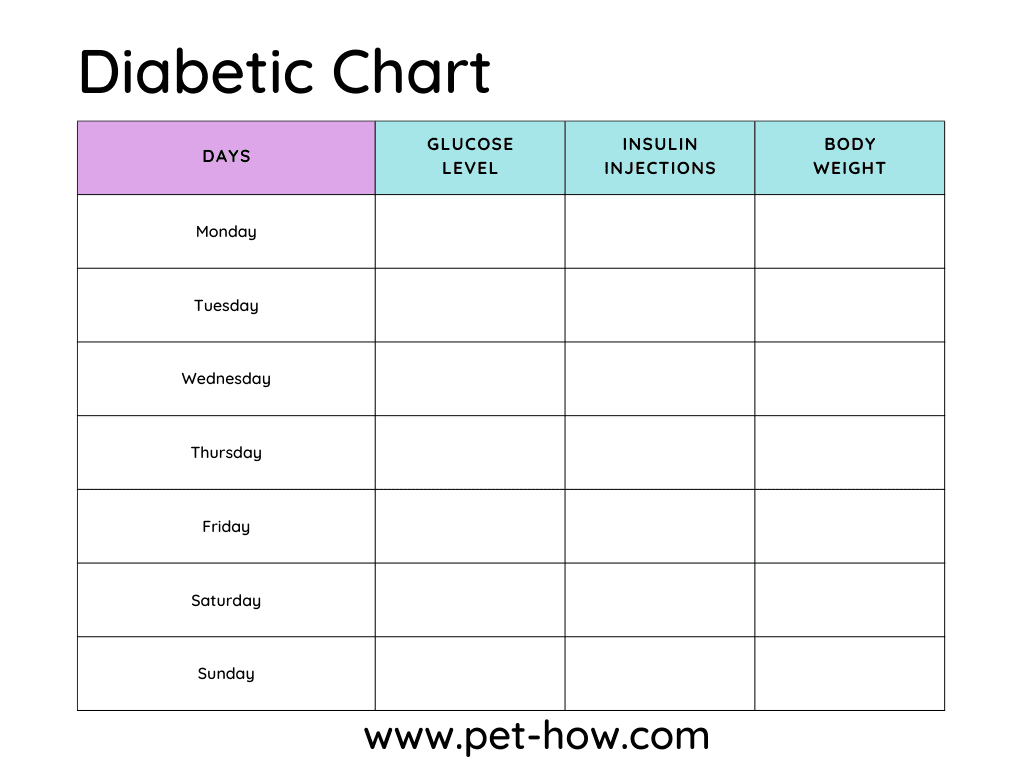Diabetes also known as Diabetes Mellitus is very common in humans.
However, recent studies have shown that 1 in 200 dogs will develop diabetes at some stage of their life.
Although diabetes can be easily managed, if left untreated for an extended period of time, it can be fatal for the dog.
Here is how to care for a newly diagnosed diabetic dog.
The Difference Between Type 1 and Type 2 Diabetes

Diabetes Mellitus is basically an endocrine disorder that can manifest in two different types:
- Type 1: Insulin Deficiency Diabetes which affects the dog’s ability to create enough insulin to appropriately regulate blood sugar levels.
- Type 2: Insulin Resistance Diabetes which affects the dog’s ability to respond to normal levels of insulin.
Under normal circumstances, the pancreas which is an essential organ located next to the dog’s stomach produces a hormone known as insulin.
Insulin helps to control the blood sugar or glucose levels in the body.
When a dog eats food, its blood sugar will start to rise in relation to the number of sugars in the food.
The pancreas will then secrete insulin which will trigger the liver and muscles to take up the glucose from the blood cells and convert it to energy.
If the dog’s body cannot produce insulin (Type 1 diabetes) or becomes resistant to insulin (Type 2 diabetes), it will prevent the muscles and organs from taking up the glucose in the blood and converting it to energy.
This will result in an excessive amount of glucose circulating in the body called hyperglycemia whilst the muscles and organs begin to starve.
Dogs can develop both types of diabetes, but they are more likely to suffer from Type 1.
(Related: What Is Diabetes In Dogs: Symptoms, Causes, Types, and Treatment)
A Must Have Items For Diabetic Dogs
The must-have items for diabetic dogs include:
- Glucometer specifically designed for pets (dogs)
- Dog insulin
- Syringes
- Test strips for dogs
- Needles (used for pricking the blood collection site)
To care for a newly diagnosed diabetic dog, you will be giving insulin injections every 12 hours and for that, you need syringes and insulin.
The veterinarian will tell you the dose for your dog and you should only inject that dose.
Do not try to change the dosage on your own because it can be life-threatening.
To monitor your dog’s glucose level, you will need a glucometer specifically designed for dogs. I found the AlphaTRAK glucometer and its strips to work the best. (link to amazon).
The reason why they are good is that the AlphaTRAK will not test the glucose if the blood sample is insufficient.
However, many other glucometers will take a reading regardless of how little blood there is and usually, this reading shows incredibly low numbers.
Getting The Glucose Level To a Normal Range With Insulin
The main aim of treating a diabetic dog is to get its blood glucose levels within a normal range.
The best and most effective way to keep your dog’s blood sugar in a normal range is to give them insulin injections twice a day, combined with a proper diet, and an exercise plan.
There are various types of insulin available including:
- Lente
- Protophane
- Caninsulin
Your veterinarian will decide which insulin will work best for your dog’s specific case.
Synchronizing your dog’s insulin injections with the feeding schedule is very important.
Basically, you need to give your dog an insulin injection after their meal, twice a day.
If you are not sure about insulin injections here is How To Give Your Diabetic Dog Insulin Injections (Vet Explained).
In scenarios when your dog will not eat its meal, do not give them insulin injections because this can lower its glucose to dangerous levels. Instead, consult with your veterinarian for further steps.
NOTE: It is super important not to overdose your dog on insulin as this can result in very low glucose levels known as hyperglycemia.
Symptoms of hyperglycemia include:
- Weakness
- Collapse
- Muscle tremors
- Depression
- Seizures
Balanced diet
Recommended types of foods for diabetic dogs are:
- High protein
- Low carbohydrates
- Low fat
- High fiber
A good option is a diabetic-specific formulated diet which is available both in dry food and tints. (Link to amazon).
Consistency is very important when it comes to feeding a diabetic dog.
The insulin dose is tied to the diet and you need to feed the same amount of the same food at exactly the same time, every day.
If your dog is overweight, you will need to focus on getting his weight under control slowly over the course of two to four months.
Moreover, if your dog lost weight due to diabetes, you will need to work on increasing his weight towards a normal range.
Foods to avoid
Make sure that you stay away from supermarket foods or tints because they often contain a large amount of poor-quality, quickly digestible carbohydrates, and low-quality protein that will cause a rapid rise in blood glucose in your dog.
Also, avoid giving your diabetic dog dark biscuit treats or human foods without checking their glycemic index (how much carbohydrates they contain).
Acceptable treats
Examples of acceptable treats for diabetic dogs are:
- Cooked chicken (without any seasoning)
- Low-fat cheese
- Zucchini
- Carrots
There are tons of approved treats for diabetic dogs and they should be fed after meal times.
If you wish to check out a complete list of approved human foods for diabetic dogs, you can do so here.
Exercise
Exercise is very important when it comes to diabetic dogs because it keeps their blood sugar levels at a normal range.
However, as with everything, exercising too should be done in moderation.
This means that when your dog gets diagnosed with diabetes, your veterinarian will determine the type of exercise and length and you should stick to it.
In most cases, short 30-minute walks twice a day are what veterinarians suggest for diabetic dogs.
Since exercise lowers blood sugar levels, you shouldn’t increase the time or the length that the vet determined.
Doing so can lead to dangerously low sugar levels known as hyperglycemia.
Monitoring The Blood Sugar At Home
Monitoring the glucose level of your dog at home is stressful at first. But, after some time, pet parents get used to it and perform the task without even thinking about it.
Monitoring the glucose level of a newly diagnosed diabetic dog is super important. The glucose readings will tell your vet how much insulin your dog exactly needs.
In the first week, the glucose levels should be done at least four times a day, before a meal and after a meal (two meals).
Here is a complete guide on How To Monitor Your Dog’s Blood Sugar [The Proper Way]
Diabetic Dog Weekly Chart

Keeping a daily and weekly chart of your dog’s daily insulin dose, glucose levels, and body weight will help you recognize if your dog is slowly slipping out of their normal pattern.
You can download a printable version of the diabetic dog chart here.
In Conclusion
Diabetes is not a disease that can be cured. Care for a newly diagnosed diabetic dog can be hard at the beginning. However, with proper management, your dog can go on to live a fully enjoyable life.


Leave a Reply